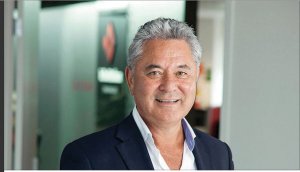Respiratory physician Lutz Beckert considers chronic obstructive pulmonary disease management, including the prevention of COPD, the importance of smoking cessation and pulmonary rehabilitation, and the lifesaving potential of addressing treatable traits. He also discusses the logic of inhaler therapy, moving from single therapy to dual and triple therapy when indicated, as well as other aspects of management
Revisiting Whānau Ora history as commissioning role goes to tender
Revisiting Whānau Ora history as commissioning role goes to tender
Gabrielle Baker takes us through a brief history of Whānau Ora and how successive governments have viewed the concept, with changes coming to commissioning agencies in 2025
In October, Te Puni Kōkiri began a procurement process to find the next iteration of whānau ora commissioning agencies.
Our three current whānau ora agencies have been around for more than a decade, and it is hard to remember what life was like before they existed. Which is why I’ve spent several days reading through a series of reports from the last 15 years, reminding myself of the journey so I could continue my role as a (self-described) lay historian.
Whānau ora, as with all Māori concepts, has a history completely independent of government. My history lesson, however, is focused on how it has been used by the Crown – so it starts in 2002 with He Korowai Oranga, the Māori Health Strategy.
At the time, it was a landmark – a strategy to unify the health sector under a vision of whānau ora – described as Māori families supported to achieve their maximum health and wellbeing.
At least in theory, this was a move towards looking at Māori health as being about collective wellbeing, with whānau recognised as the foundation of Māori society and a principal source of strength, support and identity. Significantly, He Korowai Oranga was jointly owned by the then minister of health Annette King and the then associate health minister Kahurangi (Dame) Tariana Turia – at that time both members of a Labour-led Government.
As good as the strategy is as a framework, its primary weakness was that it was unleashed on the health system with no specific funding, and in the context of weak monitoring and accountability across the board. This meant the big players at the time, DHBs, were at best patchy in their implementation.
Fast-forward to 2009 and a new government, with a National Party–Māori Party coalition. One of the first tasks of the minister for the community and voluntary sector (Kahurangi Tariana) was to establish a taskforce on whānau-centred initiatives. The taskforce, chaired by Tā Mason Durie, recommended a Whānau Ora approach (at this point I switch to capital letters because it became something akin to a brand name) shaped by te ao Māori, and that focused on whānau selfdetermination, and integrated and comprehensive services that achieve measurable outcomes. Other recommendations:
- An independent Whānau Ora Trust.
- A Whānau Ora appropriation in the Government’s budget.
- A Whānau Ora minister.
- Regional panels be established to ensure Whānau Ora makes meaningful impacts in local communities.
The resulting 2010 version of Whānau Ora was not led by an independent trust but by Te Puni Kōkiri, which was in charge of the Whānau Ora budget. Kahurangi Tariana was also appointed as Whānau Ora minister and there were regional leadership groups.
Under Te Puni Kōkiri, the Government’s Whānau Ora programme had three main components: a fund available directly to whānau for innovation and engagement; funding for provider capability building (so they were better equipped to deliver services – this often included provision for Whānau Ora navigators to work with whānau directly); and a push for integrated contracting. Imagine a whānau having “five cars up the driveway”1 each from a different government agency or provider, when having one provider who could do five things would be better, and you’re close to understanding the intention of integrated contracting during this period.
When the Office of the Auditor General looked at the first four years of Whānau Ora they found there were some clear positives – especially when ooking at small amounts of spending on whānau that had an important, positive impact.
But there were also lots of questions raised by the auditor general. They could not get a consistent explanation about what Whānau Ora was from government agencies, they were concerned that nearly a third of all funding was spent on administration, and they considered requirements for whānau seeking to access funding were overly bureaucratic (in brief, whānau needed to be represented by a legal entity of some sort). However, perhaps most damning was that the Government hadn’t changed anything about how it worked. Contracts still required providers to work with individuals, not whānau, and agencies had not made any plans to change their service or funding models to take advantage of increased provider capacity.
By the time the auditor general was looking into these matters, the Whānau Ora model had already evolved into what was at the time referred to as phase two: the establishment of stand-alone Whānau Ora commissioning agencies.
From 2014, three agencies (Te Pou Matakana – now known as the Whānau Ora Commissioning Agency – covering the North Island, Te Pūtahitanga o Te Wai Pounamu covering the South Island, and Pasifika Futures covering Pacific families across Aotearoa) began operation, having been selected through a competitive procurement process. Each agency was contracted to fund and support initiatives that deliver Whānau Ora outcomes but was able to develop and implement their approach in their own way. This model has lasted a decade and, with some marginal adjustment, is largely what is meant by Whānau Ora today.
The model was subjected to scrutiny by a Whānau Ora Review Panel appointed by MP Peeni Henare in 2018 (under a Labour-led Government). The review seemed to endorse Whānau Ora as an approach, noting the positive changes it had created.
The successes were attributed to it being a culturally anchored approach, that was flexible, staffed by a passionate workforce and with a high level of support from commissioning agencies. However, the review also pointed out:
- More localised options were needed to ensure better reach into communities (especially in the North Island).
- In many areas, demand was outstripping the funding available.
- Better administrative arrangements were needed across the three agencies (an earlier, formative, evaluation also found data capture and analysis was an issue across the agencies).
To repeat a theme of the auditor-general report, the review panel again identified the need for greater support across government agencies.
Since 2019, Whānau Ora commissioning agencies have further proven their worth to many whānau – particularly during the early stages of the COVID-19 response.2 But earlier this year it became clear the Government was planning to test the market to see if there were other entities that could play a commissioning role, as reported in June by New Zealand Doctor Rata Aotearoa.3
And that’s exactly what has happened, with Te Puni Kōkiri releasing a Registration of Interest document on GETS (the Government’s electronic tender service). The Te Puni Kōkiri document indicates there will be four commissioning agencies rather than three (with two in the North Island, one in the South and one focused on Pacific families). It also makes it more explicit that the Whānau Ora model will be focused on Whānau Ora navigators.
The ROI document indicates that decisions on preferred respondents will happen in February 2025, with the commissioning agencies being in place from 1 July 2025.
The successful agencies will have a chance to continue the legacy of Whānau Ora. Yet there is every risk they will also continue to contend with the issues plaguing Whānau Ora from day one: lots of scrutiny and expectation, with a lack of government willingness to do its own business in a way that centres whānau (rather than bureaucracy) needs.
The optimist in me hopes government agencies have reviewed their own history and will do better. The realist in me is not so sure. And the lay historian in me is watching and taking notes.
Gabrielle Baker (Ngāpuhi, Ngāti Kuri) is an independent health policy consultant
In setting out to achieve whānau ora, He Korowai Oranga Māori Health Strategy has two broad directions which acknowledge the partnership between Māori and the Crown. Within the context of these two broad directions, three key themes are woven throughout the strategy. Finally, four pathways set out how whānau ora will be achieved. This is illustrated in the diagram
Source: He Korowai Oranga Māori Health Strategy
TELL US WHAT YOU THINK
Send a Letter to the Editor to editor@nzdoctor.co.nz
- My recollection is this concept of five cars up the driveway came from then health minister Tony Ryall sometime in 2009, which seems to align with it being used in press statements from Tony Ryall the following year: https://www.beehive.govt.nz/release/five-cars-driveway-down-one
- You can read some examples in the publication Ko tōku ara rā Aotearoa COVID-19 from Te Rau Ora, 2020. tinyurl.com/Te-Rau
- Whānau ora commissioning role back up for grabs. Online nzdoctor.co.nz 26 June 2024.







![Barbara Fountain, editor of New Zealand Doctor Rata Aotearoa, and Paul Hutchison, GP and senior medical clinician at Tāmaki Health [Image: Simon Maude]](/sites/default/files/styles/thumbnail_cropped_100/public/2025-03/Barbara%20Fountain%2C%20editor%20of%20New%20Zealand%20Doctor%20Rata%20Aotearoa%2C%20and%20Paul%20Hutchison%2C%20GP%20and%20senior%20medical%20clinician%20at%20T%C4%81maki%20Health%20CR%20Simon%20Maude.jpg?itok=-HbQ1EYA)
![Lori Peters, NP and advanced health improvement practitioner at Mahitahi Hauora, and Jasper Nacilla, NP at The Terrace Medical Centre in Wellington [Image: Simon Maude]](/sites/default/files/styles/thumbnail_cropped_100/public/2025-03/2.%20Lori%20Peters%2C%20NP%20and%20advanced%20HIP%20at%20Mahitahi%20Hauora%2C%20and%20Jasper%20Nacilla%2C%20NP%20at%20The%20Terrace%20Medical%20Centre%20in%20Wellington%20CR%20Simon%20Maude.jpg?itok=sUfbsSF1)
![Ministry of Social Development health and disability coordinator Liz Williams, regional health advisors Mary Mojel and Larah Takarangi, and health and disability coordinators Rebecca Staunton and Myint Than Htut [Image: Simon Maude]](/sites/default/files/styles/thumbnail_cropped_100/public/2025-03/3.%20Ministry%20of%20Social%20Development%27s%20Liz%20Williams%2C%20Mary%20Mojel%2C%20Larah%20Takarangi%2C%20Rebecca%20Staunton%20and%20Myint%20Than%20Htut%20CR%20Simon%20Maude.jpg?itok=9ceOujzC)
![Locum GP Helen Fisher, with Te Kuiti Medical Centre NP Bridget Woodney [Image: Simon Maude]](/sites/default/files/styles/thumbnail_cropped_100/public/2025-03/4.%20Locum%20GP%20Helen%20Fisher%2C%20with%20Te%20Kuiti%20Medical%20Centre%20NP%20Bridget%20Woodney%20CR%20Simon%20Maude.jpg?itok=TJeODetm)
![Ruby Faulkner, GPEP2, with David Small, GPEP3 from The Doctors Greenmeadows in Napier [Image: Simon Maude]](/sites/default/files/styles/thumbnail_cropped_100/public/2025-03/5.%20Ruby%20Faulkner%2C%20GPEP2%2C%20with%20David%20Small%2C%20GPEP3%20from%20The%20Doctors%20Greenmeadows%20in%20Napier%20CR%20Simon%20Maude.jpg?itok=B0u4wsIs)
![Rochelle Langton and Libby Thomas, marketing advisors at the Medical Protection Society [Image: Simon Maude]](/sites/default/files/styles/thumbnail_cropped_100/public/2025-03/6.%20Rochelle%20Langton%20and%20Libby%20Thomas%2C%20marketing%20advisors%20at%20the%20Medical%20Protection%20Society%20CR%20Simon%20Maude.jpg?itok=r52_Cf74)
![Specialist GP Lucy Gibberd, medical advisor at MPS, and Zara Bolam, urgent-care specialist at The Nest Health Centre in Inglewood [Image: Simon Maude]](/sites/default/files/styles/thumbnail_cropped_100/public/2025-03/7.%20Specialist%20GP%20Lucy%20Gibberd%2C%20medical%20advisor%20at%20MPS%2C%20and%20Zara%20Bolam%2C%20urgent-care%20specialist%20at%20The%20Nest%20Health%20Centre%20in%20Inglewood%20CR%20Simon%20Maude.jpg?itok=z8eVoBU3)
![Olivia Blackmore and Trudee Sharp, NPs at Gore Health Centre, and Gaylene Hastie, NP at Queenstown Medical Centre [Image: Simon Maude]](/sites/default/files/styles/thumbnail_cropped_100/public/2025-03/8.%20Olivia%20Blackmore%20and%20Trudee%20Sharp%2C%20NPs%20at%20Gore%20Health%20Centre%2C%20and%20Gaylene%20Hastie%2C%20NP%20at%20Queenstown%20Medical%20Centre%20CR%20Simon%20Maude.jpg?itok=Z6u9d0XH)
![Mary Toloa, specialist GP at Porirua and Union Community Health Service in Wellington, Mara Coler, clinical pharmacist at Tū Ora Compass Health, and Bhavna Mistry, specialist GP at Porirua and Union Community Health Service [Image: Simon Maude]](/sites/default/files/styles/thumbnail_cropped_100/public/2025-03/9.%20Mary%20Toloa%2C%20Porirua%20and%20Union%20Community%20Health%20Service%20in%20Wellington%2C%20Mara%20Coler%2C%20T%C5%AB%20Ora%20Compass%20Health%2C%20and%20Bhavna%20Mistry%2C%20PUCHS%20CR%20Simon%20Maude.jpg?itok=kpChr0cc)